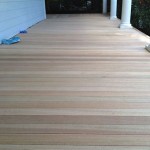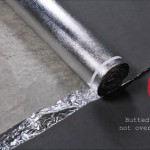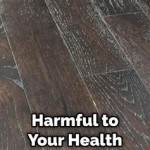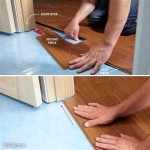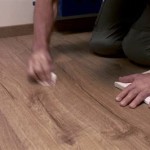Plywood Plank Flooring Reviews: Investigating Cost-Effectiveness and Performance
Plywood plank flooring has emerged as a potential alternative to traditional hardwood and engineered wood options, sparking considerable interest in the construction and renovation sectors. This interest stems primarily from its lower cost and perceived ease of installation. However, a comprehensive understanding of its properties, advantages, disadvantages, and long-term performance is essential before making an informed decision. This article explores reviews and technical aspects of plywood plank flooring, focusing on its viability as a flooring material.
The term "plywood plank flooring" generally refers to flooring constructed using plywood as the core material. Typically, this consists of layers of wood veneer glued together with alternating grain directions to enhance strength and dimensional stability. The topmost layer may be a decorative veneer, designed to mimic the appearance of hardwood, or it may be left unfinished for application of a sealant or paint. Various thicknesses and grades of plywood are used, significantly affecting the final product's quality and suitability for different applications.
Cost Considerations and Installation Ease
One of the most significant advantages of using plywood plank flooring is its relatively low cost compared to solid hardwood or engineered wood options. The raw material, plywood, is often more readily available and less expensive than solid hardwood, contributing to lower manufacturing costs. This cost-effectiveness is particularly attractive for large-scale projects or for homeowners on a budget. The affordability extends beyond the material cost, potentially including lower labor costs for installation in certain circumstances.
Installation can be straightforward, especially if the plywood planks are manufactured with tongue-and-groove edges. This facilitates a secure and interlocking fit, reducing the need for specialized tools or extensive carpentry skills. However, proper subfloor preparation is critical. A level and clean subfloor is essential to prevent unevenness or movement in the plywood planks, which can lead to squeaking or damage over time. Some manufacturers recommend specific adhesives or fasteners to ensure a secure bond between the plywood planks and the subfloor, further influencing the overall cost and installation time.
Ease of installation can vary depending on the specific product and the installer's experience. While the tongue-and-groove design simplifies the process, precise cutting and fitting around obstacles and edges require attention to detail. Furthermore, the weight of plywood planks can be a factor, particularly for DIY installations. Handling larger and thicker planks may require assistance to ensure proper placement and alignment. The cost of professional installation should be considered when evaluating the overall cost-effectiveness of plywood plank flooring.
Durability, Moisture Resistance, and Maintenance
The durability of plywood plank flooring depends heavily on the quality of the plywood used, the thickness of the planks, and the type of finish applied. High-grade plywood, constructed with multiple layers of hardwood veneer and bonded with durable adhesives, offers superior strength and resistance to warping or splitting. However, even high-quality plywood is susceptible to damage from excessive moisture.
Moisture resistance is a critical factor to consider, especially in environments with high humidity or potential water exposure, such as bathrooms or kitchens. Untreated plywood can absorb moisture, leading to swelling, warping, and fungal growth. Applying a sealant or finish that provides a barrier against moisture is essential for extending the lifespan of plywood plank flooring. Marine-grade plywood, designed for use in marine applications, offers superior moisture resistance but also comes at a higher cost. The choice of sealant or finish is also crucial, as some finishes are more water-resistant and durable than others.
Maintenance of plywood plank flooring typically involves regular sweeping or vacuuming to remove dirt and debris. Damp mopping with a pH-neutral cleaner is generally recommended, but excessive water should be avoided. The type of finish applied will dictate the specific cleaning and maintenance requirements. Some finishes may require periodic reapplication to maintain their protective properties. Scratches and dents can occur, particularly with softer plywood varieties. Repairing scratches may involve applying a wood filler or touch-up stain, depending on the severity of the damage and the type of finish.
Aesthetic Considerations and Design Versatility
Plywood plank flooring offers a degree of design versatility. The topmost veneer can be chosen to mimic different wood species, allowing homeowners to achieve the desired aesthetic without the expense of solid hardwood. Options range from traditional oak and maple to more exotic species like walnut or cherry. Alternatively, the plywood can be left unfinished and stained or painted to create a custom look.
The visual appeal of plywood plank flooring can be enhanced by choosing planks with varying grain patterns and colors. This creates a more natural and visually interesting floor. The plank size and layout can also influence the overall aesthetic. Wider planks tend to create a more modern and spacious feel, while narrower planks can evoke a more traditional look. The direction in which the planks are laid can also affect the perceived size and shape of the room.
However, it is important to acknowledge that plywood plank flooring might not replicate the authentic look and feel of solid hardwood perfectly. The edges of the planks may reveal the layered construction of the plywood, which some homeowners may find aesthetically undesirable. Careful selection of the veneer and edge treatments can minimize this effect. The finish applied can also significantly impact the final appearance. A matte finish tends to look more natural, while a glossy finish can enhance the grain and color of the wood.
The sustainability aspect is also relevant. Plywood, when sourced from sustainably managed forests, can be a more environmentally friendly option than some slow-growing hardwoods. Certifications like the Forest Stewardship Council (FSC) can help ensure that the plywood is sourced responsibly. However, the adhesives used in plywood manufacturing can contain formaldehyde, a volatile organic compound (VOC) that can negatively impact indoor air quality. Opting for plywood with low-VOC or formaldehyde-free adhesives is a healthier and more sustainable choice.
In conclusion, plywood plank flooring presents a complex equation of cost savings, installation practicality, durability concerns, and aesthetic considerations. Careful evaluation of these factors is crucial before deciding if it's the right flooring solution.

Diy Plywood Plank Flooring One Year Review

Vinyl Plank Flooring Review After One Year In Our Home

Hardwood Vs Engineered Wood Flooring Which Is Best For You Forbes Home

Engineered Wood Flooring Review And Beyond Blog

Vinyl Plank Flooring Review After One Year In Our Home

Engineered Flooring Vs Laminate Everything You Need To Know Forbes Home

An Honest Review Of My Floating Floorté Hardwoods 3 Months Later

Redeeming Hampton A One Week Review Of Our Lifeproof Luxury Vinyl Plank Flooring

Real Wood Floors Made From Plywood Diy Flooring

Inexpensive Flooring Options Ideas Instead Of Hardwood Family Handyman
Related Posts

